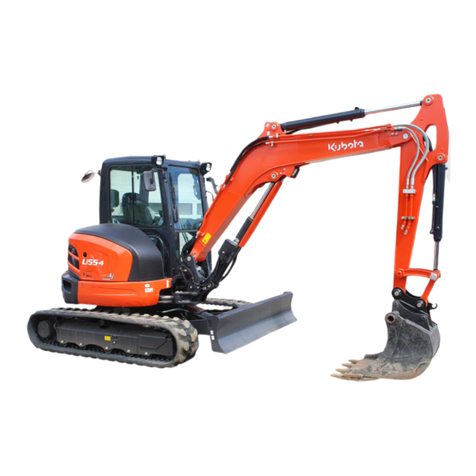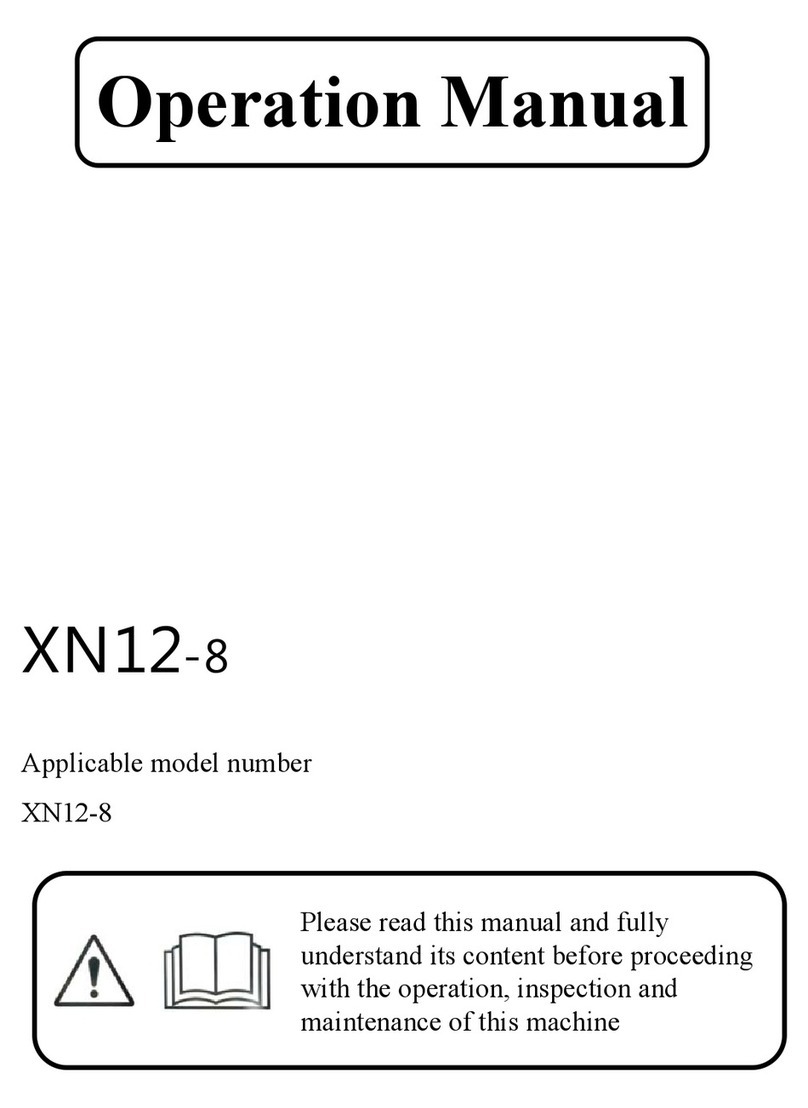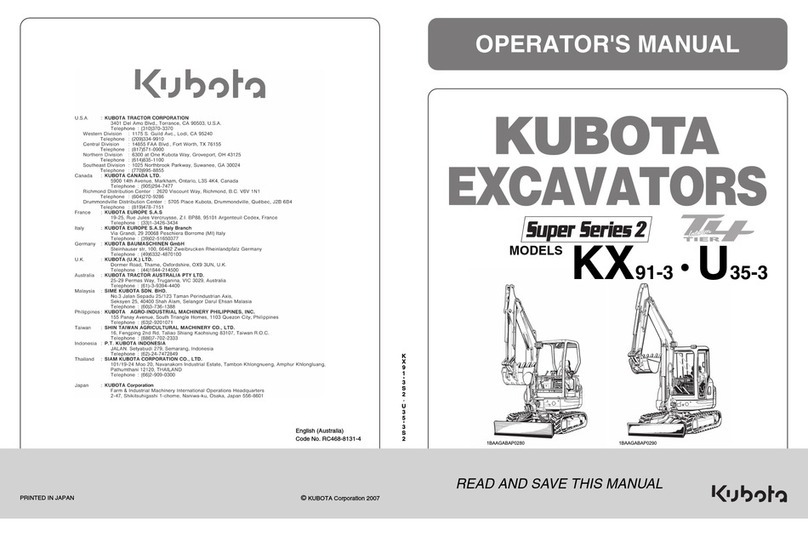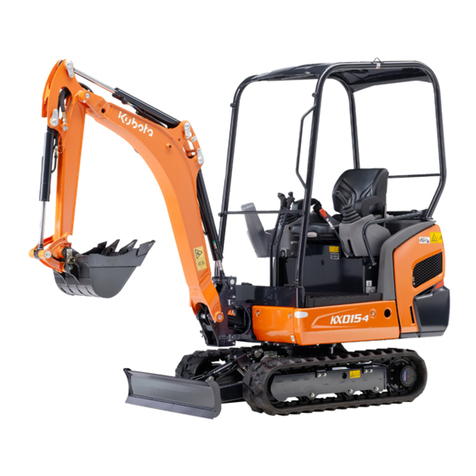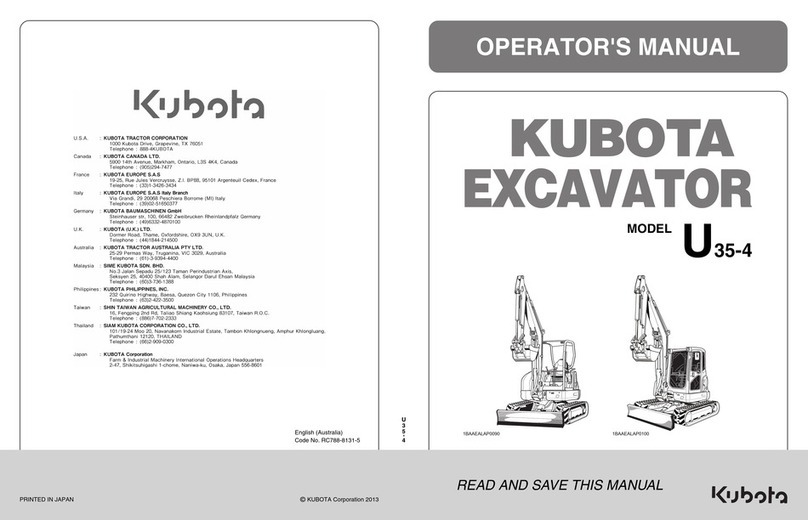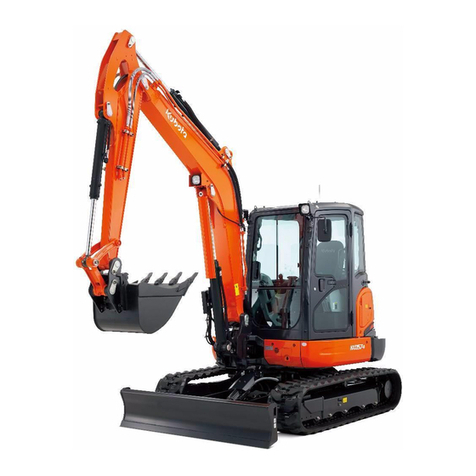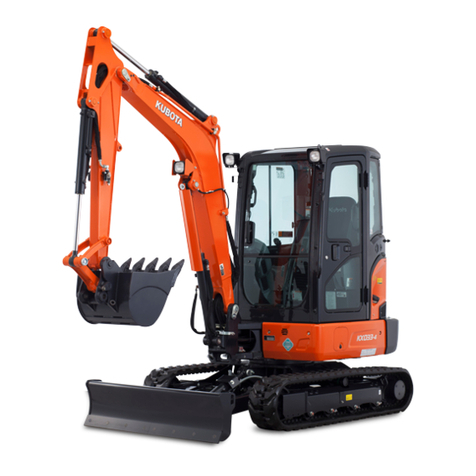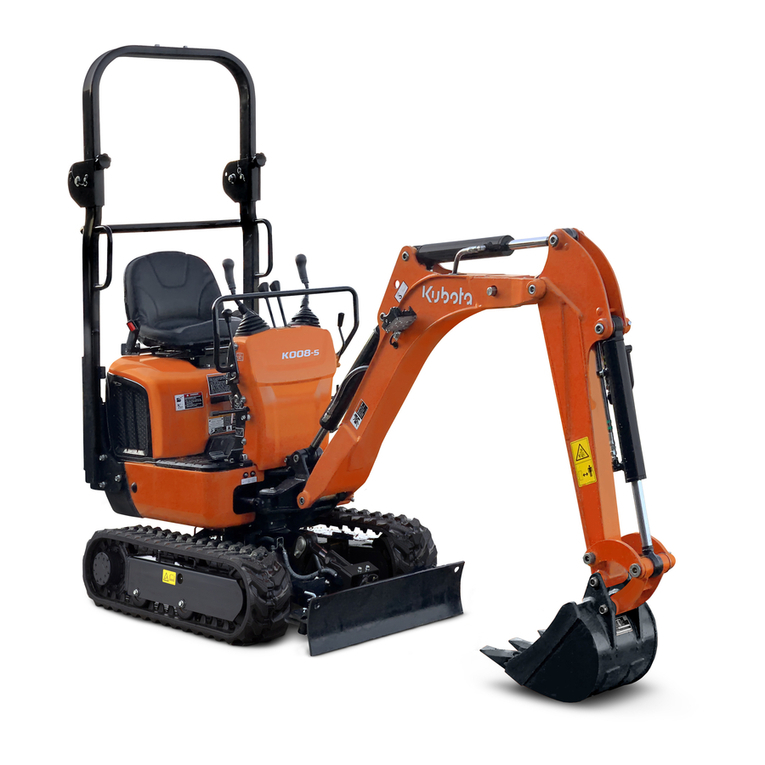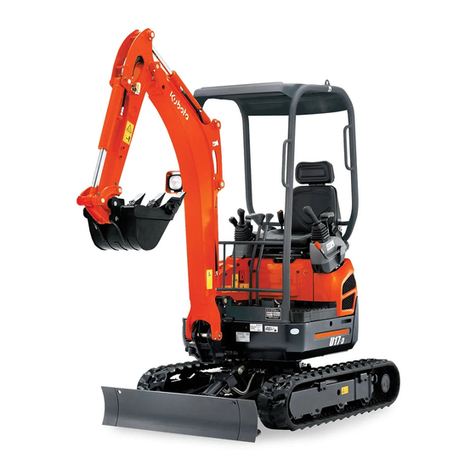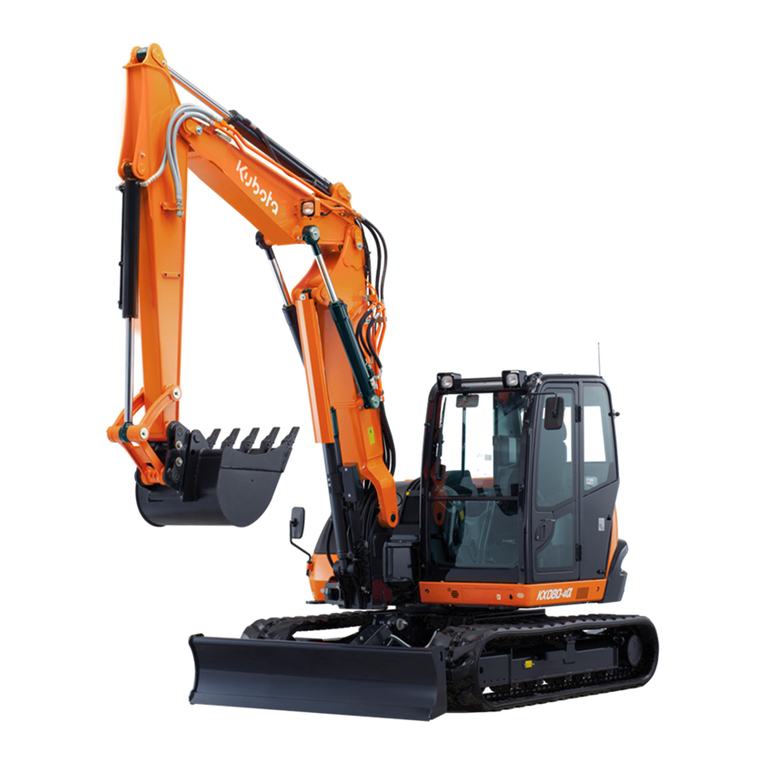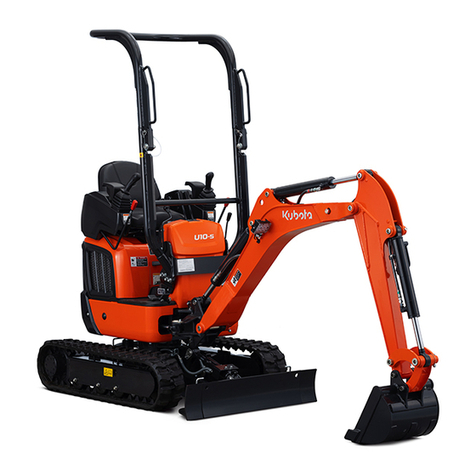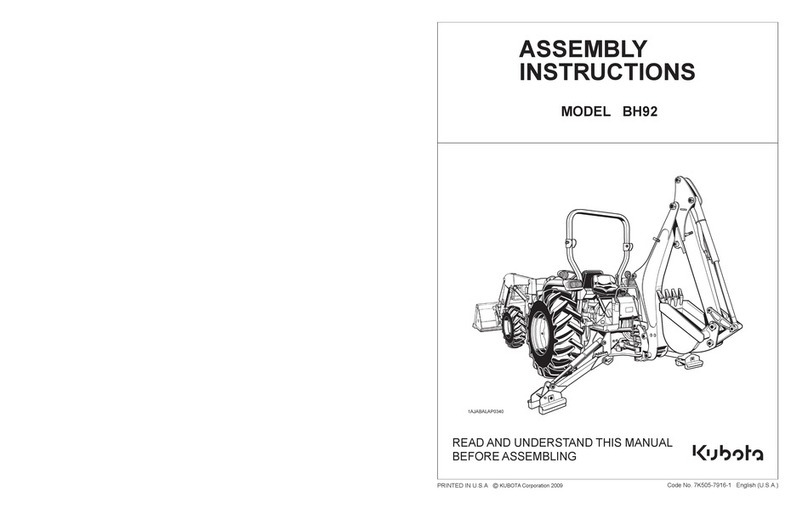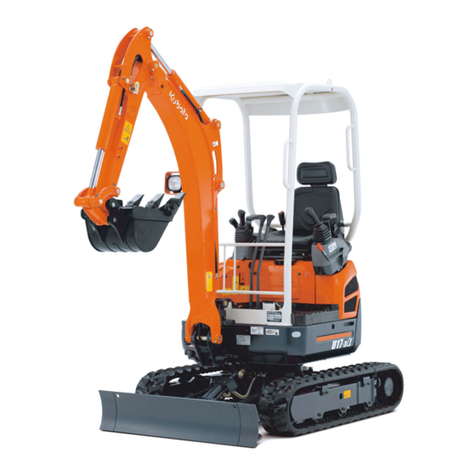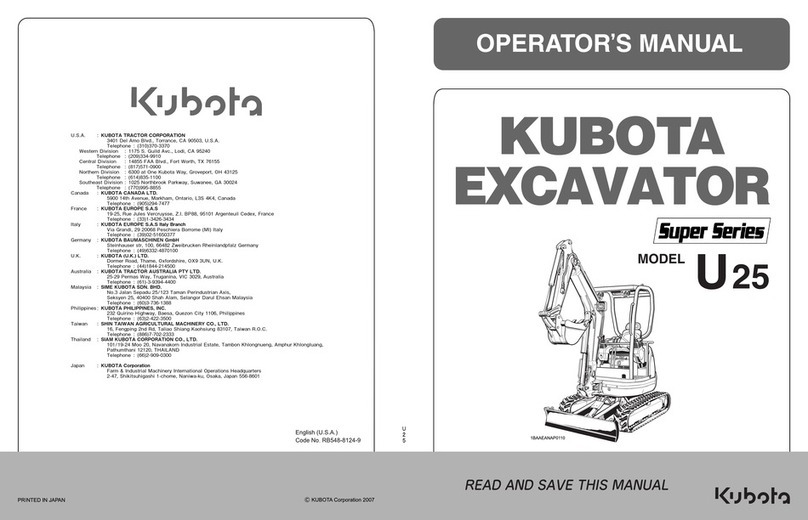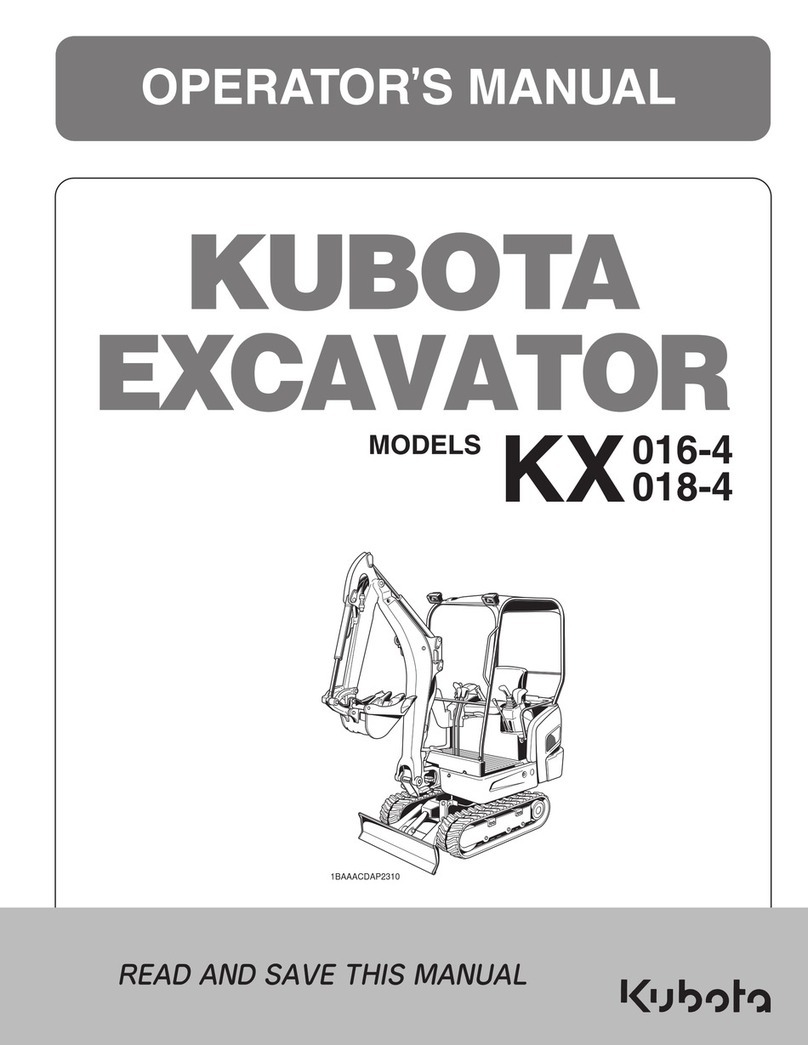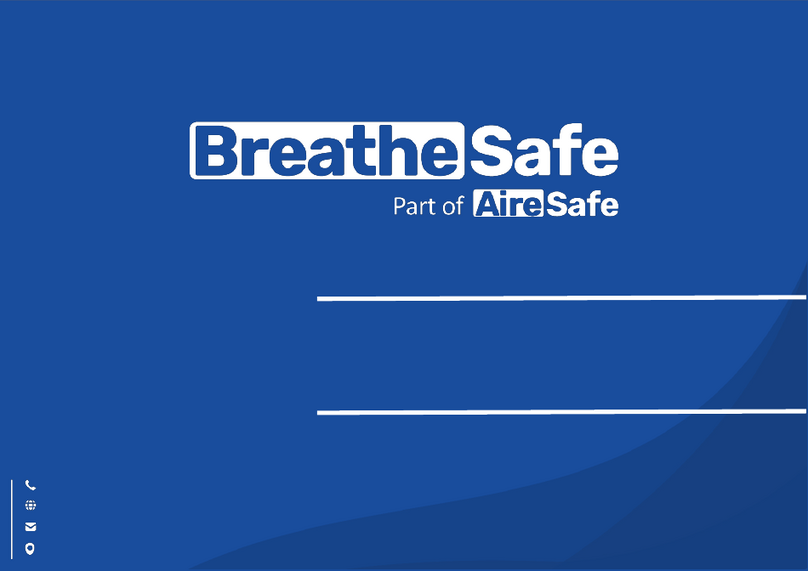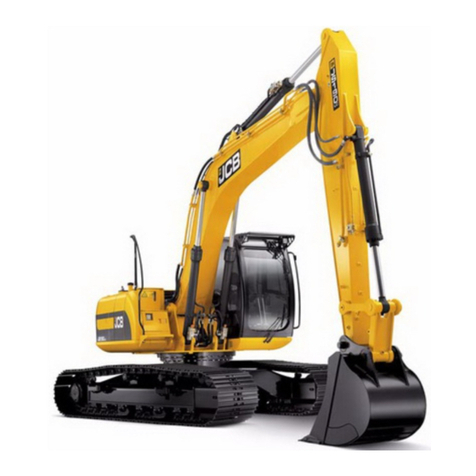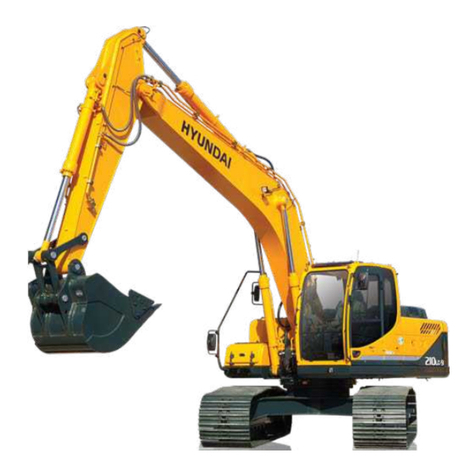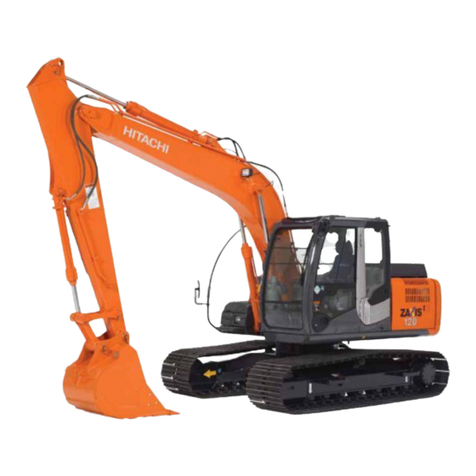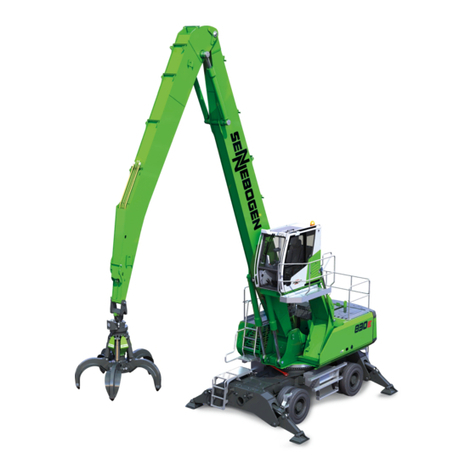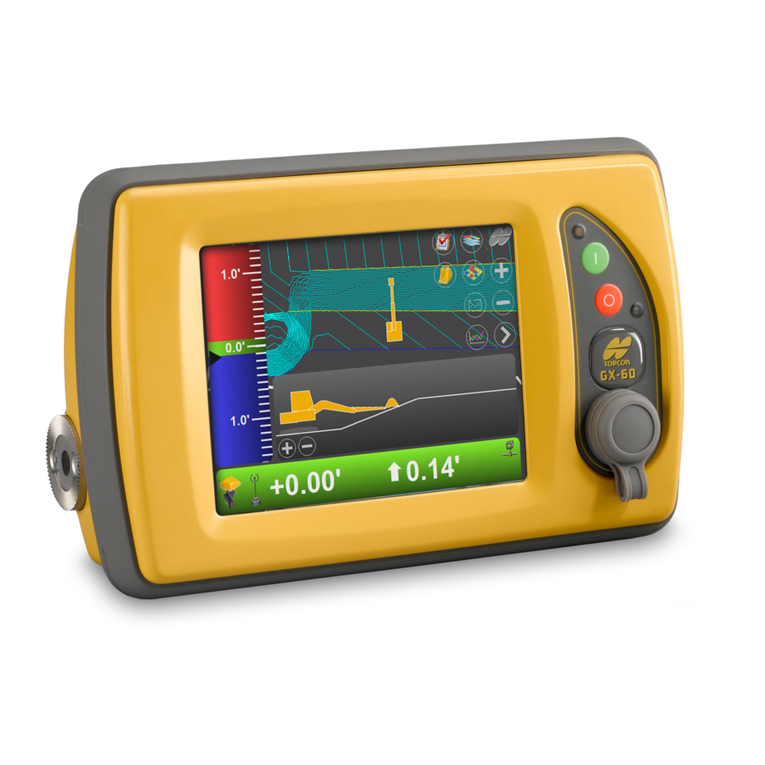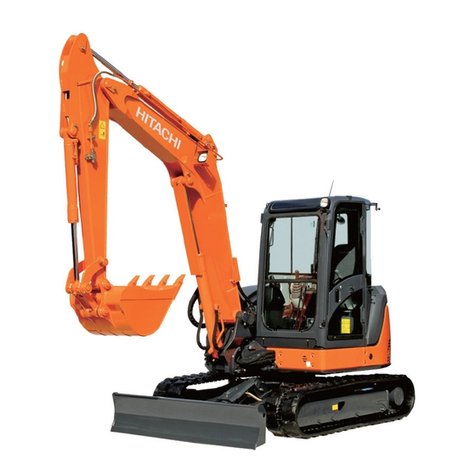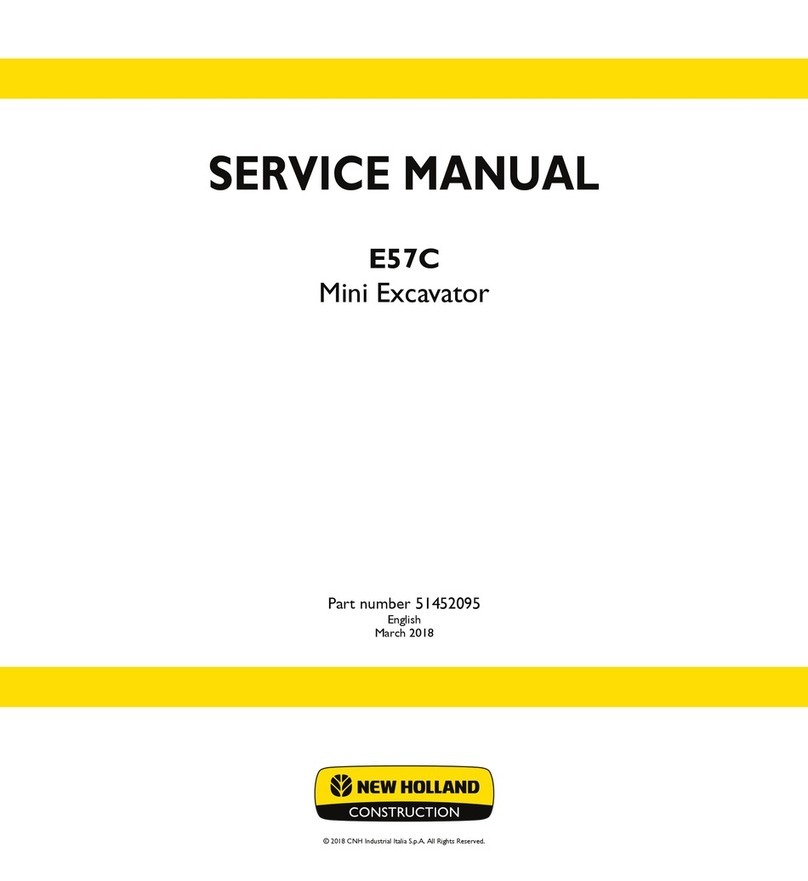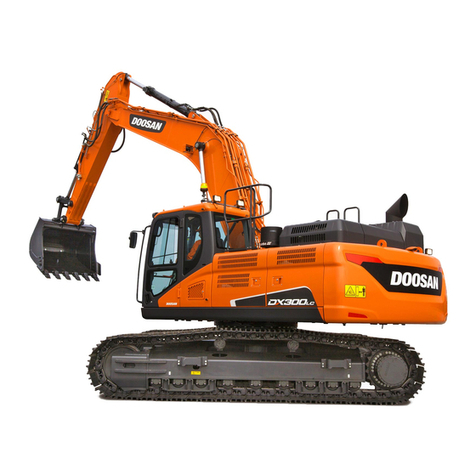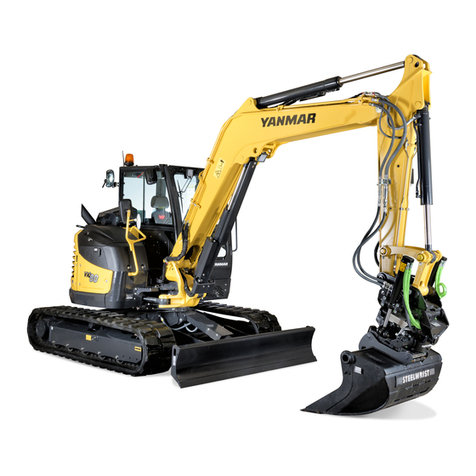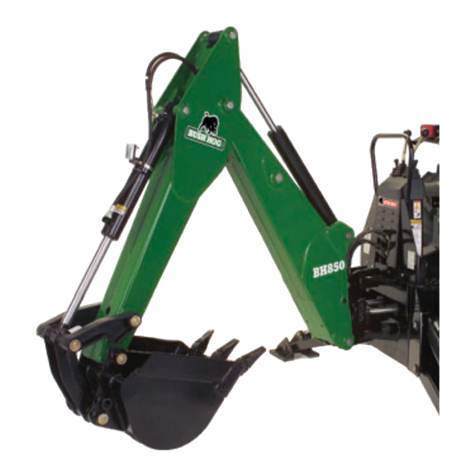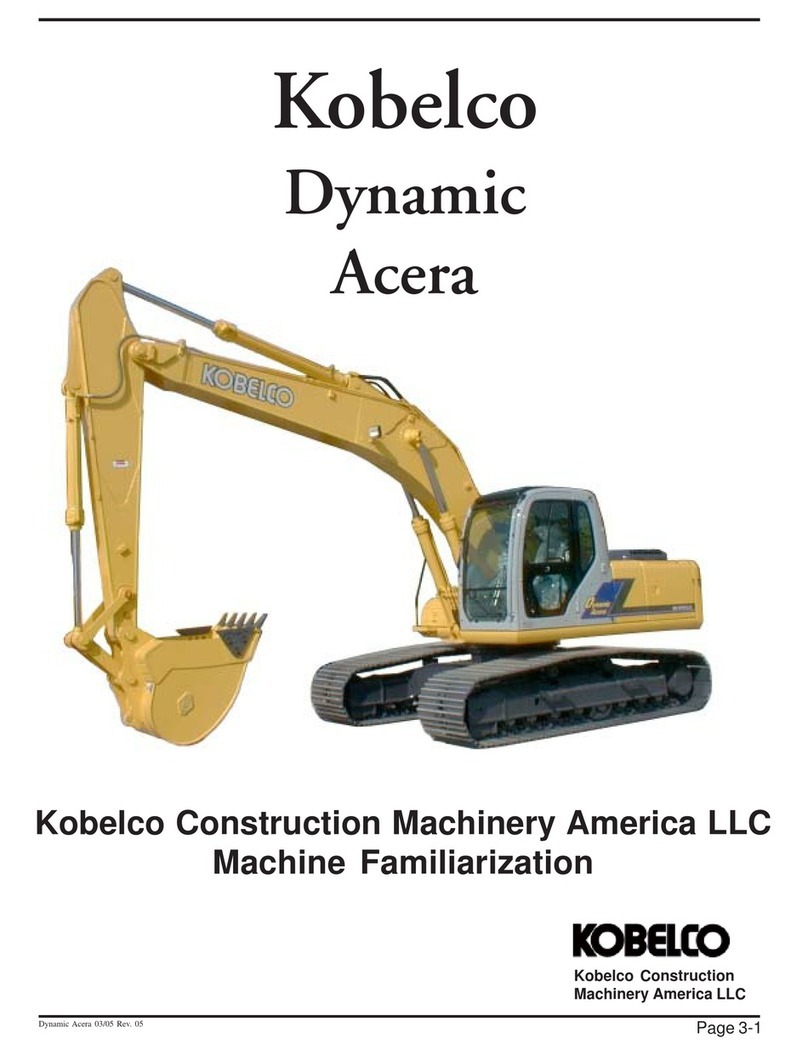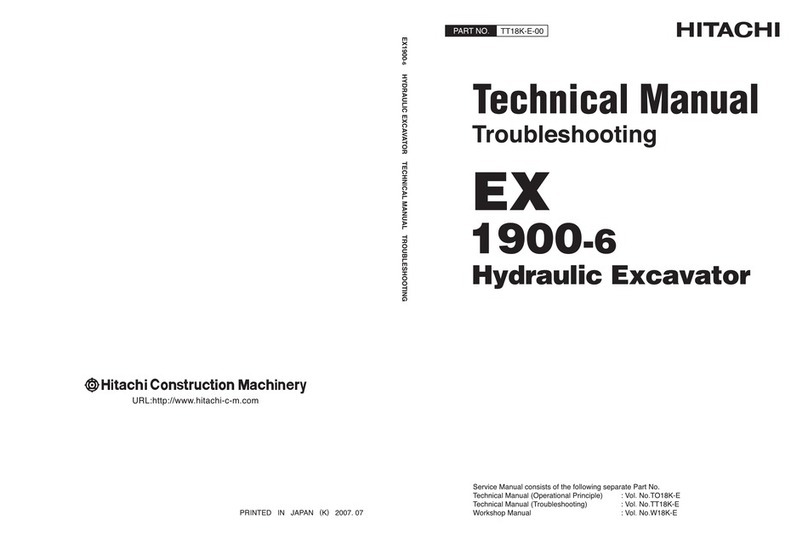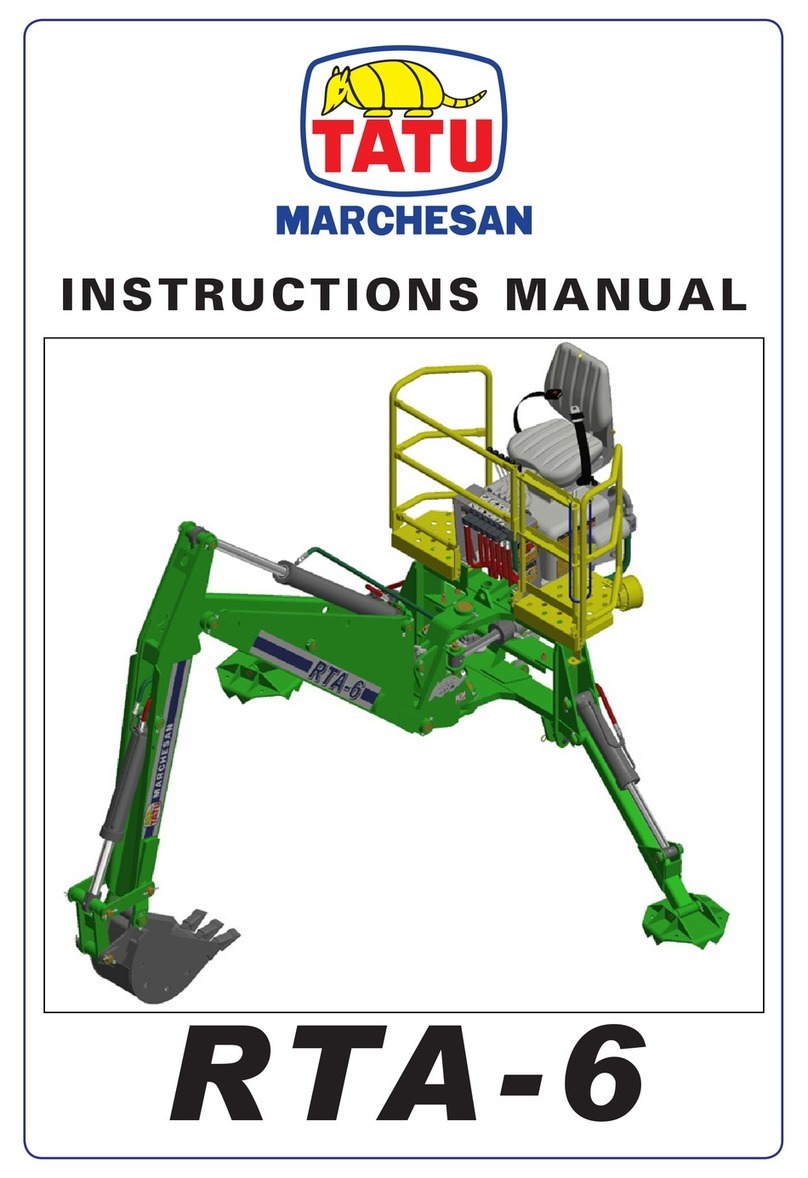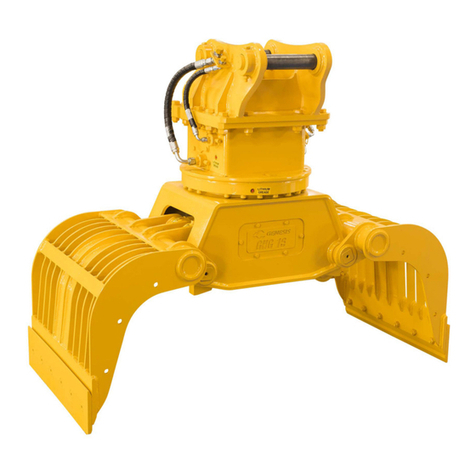
CONTENTS
Where to keep Operator's Manual..................................................................................65
Cup Holder......................................................................................................................65
DAILY CHECKS..................................................................................................... 65
Checking Coolant Level.................................................................................................. 65
Checking Fuel Level ....................................................................................................... 66
Checking Engine Oil Level.............................................................................................. 66
Checking Hydraulic Oil Level.......................................................................................... 67
Checking V-belt .............................................................................................................. 67
Checking Radiator and Oil Cooler .................................................................................. 68
Checking Washer Liquid................................................................................................. 68
Cleaning Pre-Cleaner ..................................................................................................... 69
Checking and Cleaning Engine and Electrical Wiring.....................................................69
Washing Whole Machine ................................................................................................ 69
Greasing Front Attachments (without Bucket Pin and Boom Swing Fulcrum)................ 69
Greasing Bucket Pin and Bucket Link Pin ...................................................................... 70
Greasing Boom Swing Fulcrum......................................................................................70
REGULAR CHECKS AND MAINTENANCE WORK ................................................. 71
EVERY 50 SERVICE HOURS ............................................................................... 71
Draining Fuel Tank .........................................................................................................71
Draining Water Separator...............................................................................................71
Battery ............................................................................................................................ 72
Battery Charging............................................................................................................. 73
Greasing Swing Bearing Teeth.......................................................................................73
EVERY 200 SERVICE HOURS ............................................................................. 74
Adjusting V-belt Tension................................................................................................. 74
Checking Radiator Hoses and Clamps........................................................................... 75
Inspection and Cleaning Air Filter Element.....................................................................75
Air Filter Maintenance..................................................................................................... 76
Greasing Swing Ball Bearing.......................................................................................... 76
Checking Fuel Line and Intake Air Line .......................................................................... 77
AIR CONDITIONER ............................................................................................... 77
Cleaning Air Filter ........................................................................................................... 77
Checking Air-Conditioner Condenser ............................................................................. 78
EVERY 250 SERVICE HOURS ............................................................................. 78
Changing Engine Oil(First Engine Oil Change after 50 Service Hours) ......................... 78
Replacing Engine Oil Filter .............................................................................................79
EVERY 500 SERVICE HOURS ............................................................................. 79
Drive unit Oil Change(First Oil Change of the 50 hours) ................................................79
Replacing Fuel Filter Cartridge.......................................................................................80
Replacing Breather Filter ................................................................................................ 80
EVERY 1000 SERVICE HOURS ........................................................................... 80
Replacing the Hydraulic Pilot Filter Element...................................................................80
Replacing Hydraulic Return Filter Element..................................................................... 81
Hydraulic Oil Change (Including Replacing of the Suction Filter in the Hydraulic Tank) 81
Hydraulic Oil Check with Hydraulic Hammers ................................................................ 82
EVERY 1000 SERVICE HOURS OR ONCE A YEAR ........................................... 83
Replacing Air Filter Element ........................................................................................... 83
EVERY 1500 SERVICE HOURS ........................................................................... 83
Checking Fuel Injection Nozzle(Injection Pressure) ....................................................... 83
EVERY 2000 SERVICE HOURS ........................................................................... 83
Changing Front Idler and Track Roller Oil ...................................................................... 83
